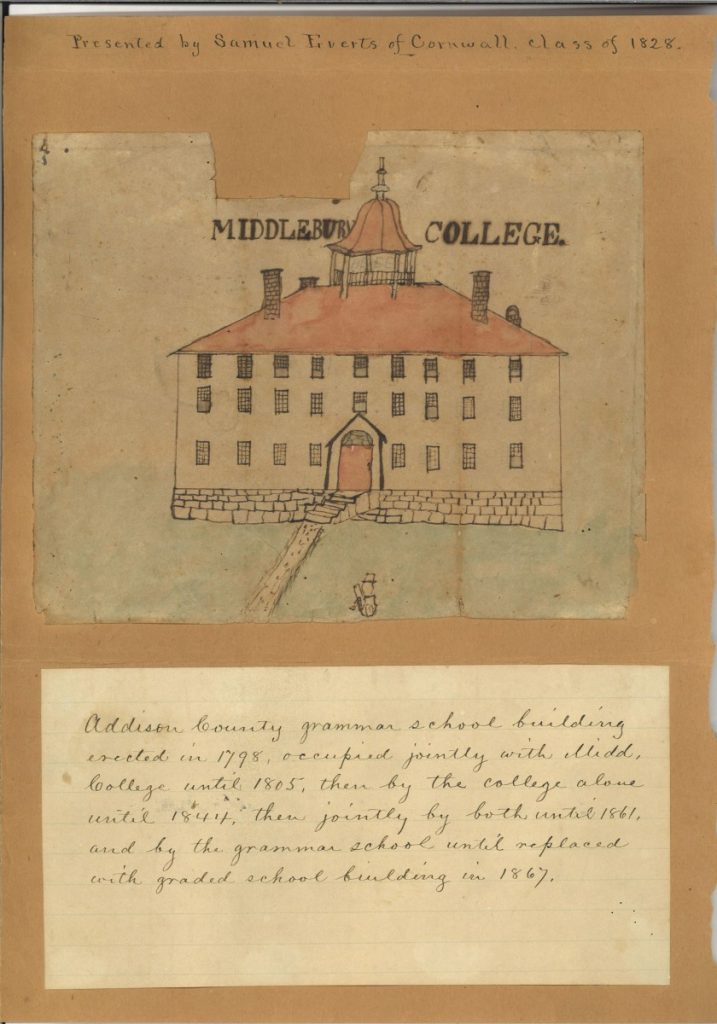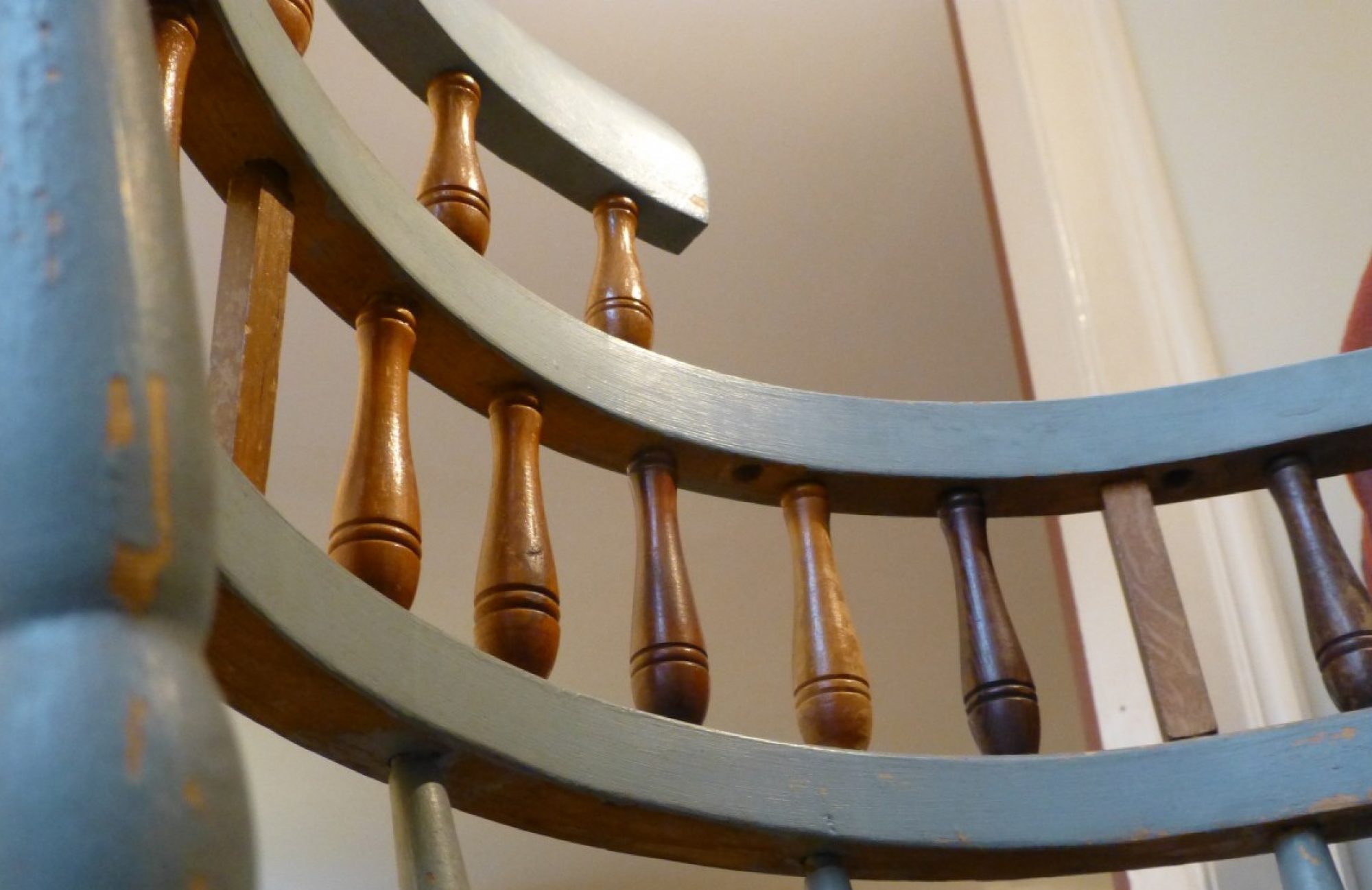The third from the left spindle on the top row of Henry Sheldon’s Relic Chair is made from wood taken from the first Middlebury College building, originally constructed as the Addison County Grammar School. Today, this building is often referred to as the Academy, or the East College. By the 1796 Vermont legislative session, residents of Addison County were “anxious to build” their own Grammar School, seeing clearly the utility of others constructed throughout the state.1 Amos Marsh’s petition to build the Grammar School in Vergennes was deferred to the 1797 session, in which three lawyers residing in Middlebury, Samuel Miller, Daniel Chipman, and Seth Storrs, argued Middlebury was a more “centrally located and healthful” choice. Miller was the first lawyer to settle in Middlebury, and Storrs served as the county attorney. These men, along with Gamaliel Painter, a businessman involved in a variety of industries and “archetypal town founder,” all “epitomized the town booster so characteristic of the American frontier.”2 Miller, Chipman, and Storrs’ petition was accepted during the 1797 legislative session, providing the burgeoning town of Middlebury with the opportunity to house the Addison County Grammar School.

The building that would become Middlebury College was instilled with ambition from its construction. In light of Middlebury’s rapid population growth (a tripling between 1791 and 1800) and selection as the host of the 1800 legislative session, the Addison County Grammar School was constructed to be elegant and impressive. It was a three-story white frame building, 80 feet long and 40 feet wide, with an impressive number of windows. Before the construction had finished, Storrs, Miller, Chipman, and Painter, along with Darius Matthews, a medical doctor and resident of the town, had discussed developing the Grammar School into a college. Due to their ambition, combined with a pessimistic outlook on the future of the University of Vermont, they petitioned the 1798 General Assembly to “establish a college or university at … Middlebury.”3 This assembly was “absorbed in national political disputes,” and high tempers along with opposition from supporters of UVM led to the petition being referred to the Assembly’s 1799 meeting, where the petition was again deferred to the 1800 meeting.4
In the 1800 legislative session, legislators were impressed by development in the town of Middlebury, and granted a charter to Middlebury College. After only five days, Middlebury examined seven students for consideration, admitting them all and obtaining its first students. This building remained the only College building, containing dorms, offices, and classrooms for students and faculty until 1815, when Painter Hall was completed, to be followed by Old Chapel and Starr Hall. Together, these three buildings constitute Old Stone Row, and Painter Hall is the oldest surviving college building in Vermont.
Following the construction of Starr Hall, in 1861, the space provided by the original building was no longer needed. Described by an alumnus as “an unsightly ruin in those days, but glorious with memories” the former Addison County Grammar School was torn down in 1867, making space for the construction of a new building for the local grade school.5 Henry Sheldon himself preserved this fragment of wood from an old timber of the building.
– Colin Flaherty ’20
Footnotes
1. David Mitchell Stameshkin, The Town’s college: Middlebury College, 1800-1915 (Middlebury College Press, 1985): 18.
2. Ibid., 15, 17.
3. Ibid., 24.
4. Ibid.
5. Ibid., 150.
Additional Readings
Swift, Samuel. History of the Town of Middlebury in the County of Addison, Vermont. Middlebury: A.H. Copeland, 1859: Chapter XXII- “Addison County Grammar School” and chapter XXIII- “Middlebury College”
